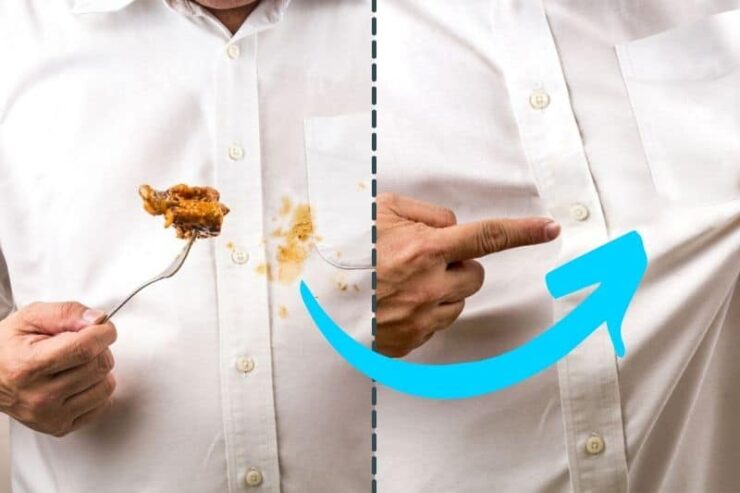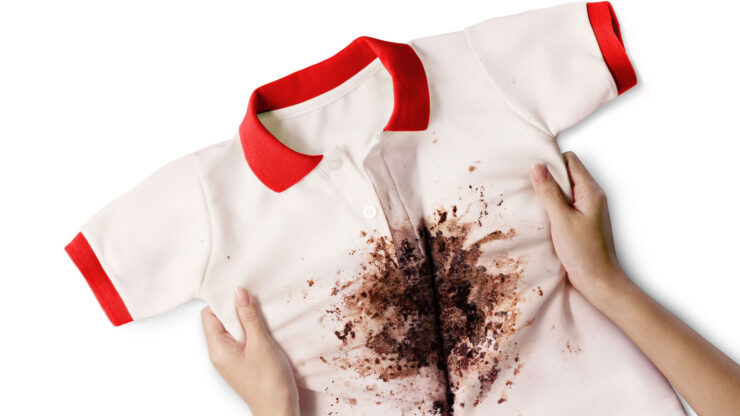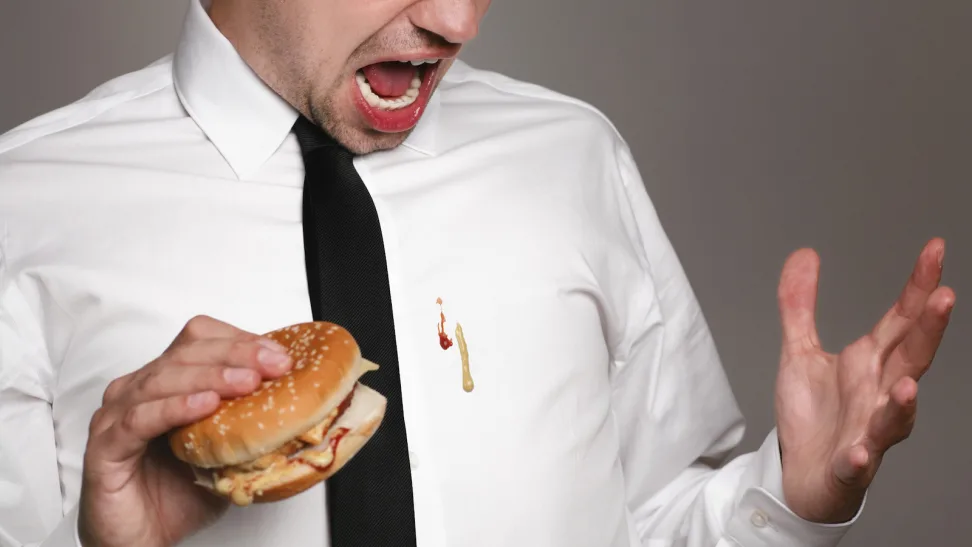You are probably a food lover— whether you love to eat or cook, it is common to have stain problems. Yet, since you love food, there’s nothing you can do but fight these stubborn food stains. It is best to arm yourself with these easy and effective techniques to remove food stains.
Fighting food stains is a matter of timing. You have to pretreat it before heading over to the nearest laundry service (we recommend Liox if you’re in New York).
Most Common and Stubborn Food Stains

A food lover has no exclusions, but these could be the common food that usually lands on your favorite clothes and causes stain:
- Pizza
- Salad dressing
- Ice cream
- Chocolate
- Butter
- Tomato Sauce
- Coffee, wine, or tea
Excessive and leftover stains on clothes are stubborn to remove. But, if you have the right tools and know the proper way of pretreating the stains, there will be no problem.
Tools You Need to Ward Off Stubborn Stains

You need to have the right tools to get rid of the stains stress-free. Leave the bleach and soft fabric out of the list because they are unsuitable for your clothes. Instead, make sure to have these cleaning products:
- Distilled white vinegar
- Baking soda
- Salt
- Liquid laundry detergent
- Dishwashing soap
How to Remove Food Stains Efficiently

This is a general instruction. As long as you act on the stain immediately, it becomes easier to remove.
- Remove the excessive stain and blot the stain left on the clothing. Use a dull knife or spoon to remove any excess stains on your clothes. If you notice the leftover stain is saturated, blot it with a damp paper towel or clean clothes.
- Read the wash label carefully. Before you do anything else, read the instructions on how you should provide care to the clothes. Some stain pre-treating solutions can damage the fabric of your clothes.
- Choose the appropriate natural stain remover to use according to the stain. Some stains, such as greasy ones, are removed better with dishwashing liquid, while other stains are more reactive to baking soda or white vinegar. Do not forget to check if the solution is safe for the clothing material. Remember, laundry is not a one-size-fit-to-all activity. There are considerations.
- Wash the clothing accordingly. Do not use harsh laundry detergent, and do not use it excessively. Putting more than the required amount will only make the situation worse. Soap residues may cause odor.
- Do not throw stained clothes in the dryer. Air dry them. Although some say it is fine to throw in stained clothes as long as it is in low heat, air drying your clothes is better. You do not know if there are unnoticeable stains left on the clothes, and the heat may cause the stain to seep further.
Worried that you do not have spare time to combat these stubborn stains? Do not worry. Just pre-treat the stain and call your trusted laundry delivery service, and they will banish those spots.
However, some spots are not easy to remove, especially when it is on a delicate cloth. It may not be efficient to only have a full laundry service; it may need a dry cleaning service to remove most of the stains.
Why are some stains not removed efficiently?
- Some wait to pretreat their stains as soon as possible. If stains are left untreated, it sets and becomes less likely removable. A good rule of thumb when dealing with stains is: if something spills onto your clothes, make sure to leave it on time. Pretreat the items immediately and have them cleaned as soon as possible. Time is essential when dealing with stains.
- Unidentified stains. Stains become more difficult to remove if you are unsure what it is. If you bring your clothes to the laundry service, make sure to tell them what it is, so they would know the best method to use. Laundry and dry cleaners know the right product and method to use if they know what the stain is.
- Stain and fabric combination. Some stains are difficult to remove because of the fabric they spilled on. Delicate fabrics become more challenging; you need professional help to remove the stain without causing damage to the fabric.
When you bring your laundry to the dry cleaners, point out and explain the stain. Be sure to tell what ; tell them when the stain happened and if you have taken done any steps to remove it. Some pretreatment sets stains or damages the fabric.
Benefits of Dry Cleaning Stained Clothes

Although most people recommend pretreating stains with natural ingredients and have the clothes full serviced at the laundromat, there are times you need to have them dry cleaned to remove the food stains efficiently.
- Dry cleaning is convenient, the same with the full laundry service. You only have to drop off your clothes or have them picked up and delivered to your place. It is more convenient and time saving, than doing it at home.
- Dry cleaners can handle delicate items. The staff at a dry cleaning service is knowledgeable on how to handle clothes with delicate materials.
- Removes odor and stains from fabric effectively. Even though you are concerned of the marks left by the food, some food also leaves an odor with its stain. It is better to bring them to the dry cleaner and have the mark and odor removed efficiently. Sometimes, odor remains even when the stain is not visible.
Do not discard your stained clothes easily. Try taking them to a laundry service that offers full laundry and dry cleaning services.
Final Takeaway
Stains worry us, especially when it happens on a delicate cloth. If this happens to you, immediately tend to the stain to have more chance of removing them successfully. If the stain is stubborn, bring them to a laundry service that offers full laundry or dry cleaning services. You might need to dry clean your clothes if stains are quite difficult to remove.

